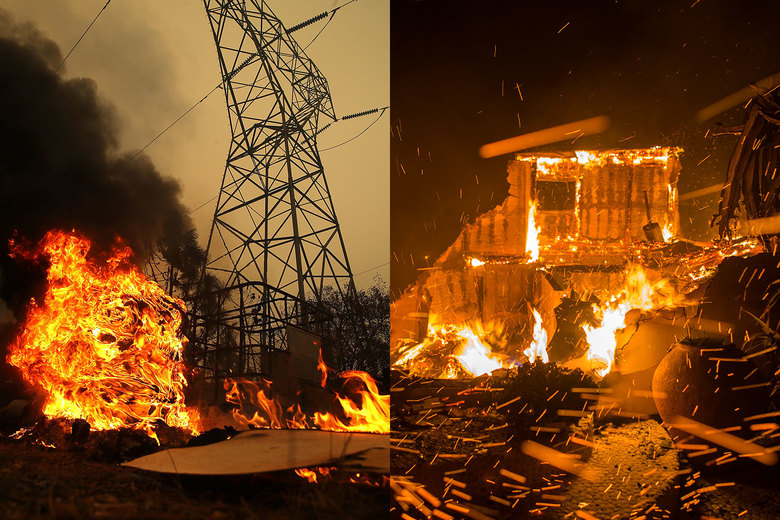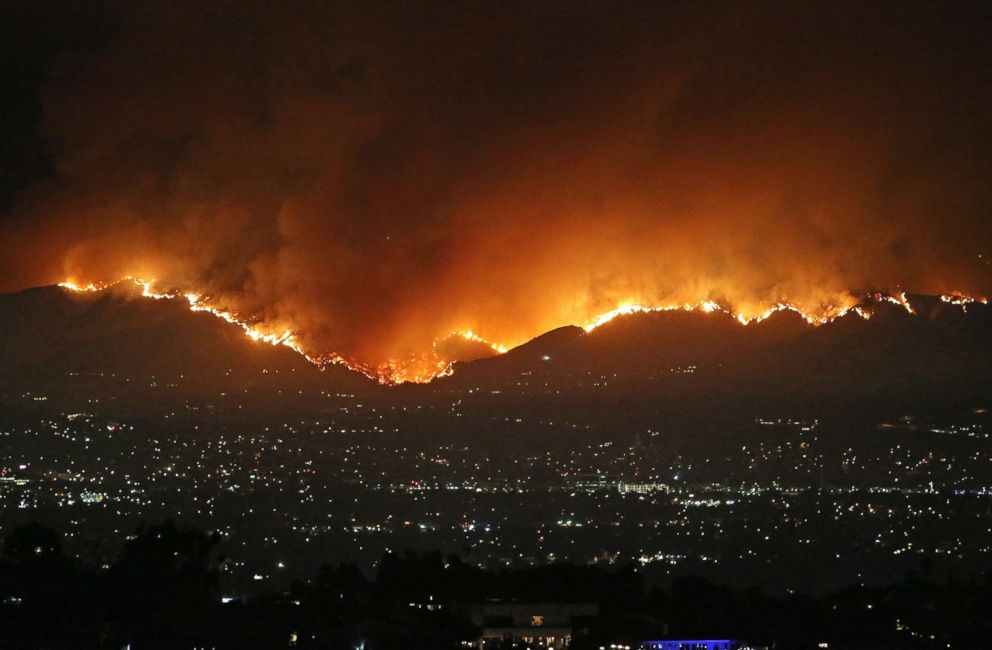August complex fire expanded beyond 1m acres, elevating it from a mere ‘megafire’ to a new classification: ‘gigafire’
At 1.03m acres, the fire is larger than the state of Rhode Island and is raging across seven counties, according to fire agency Cal Fire. Photograph: Noah Berger/AP
California’s extraordinary year of wildfires has spawned another new milestone – the first “gigafire”, a blaze spanning 1m acres, in modern history.
California fires set bleak record as 4m acres destroyed
On Monday, the August complex fire in northern California expanded beyond 1m acres, elevating it from a mere “megafire” to a new classification, “gigafire”, never used before in a contemporary setting in the state.
At 1.03m acres, the fire is larger than the state of Rhode Island and is raging across seven counties, according to fire agency Cal Fire. An amalgamation of several fires caused when lightning struck dry forests in August, the vast conflagration has been burning for 50 days and is only half-contained.
The August complex fire heads a list of huge fires that have chewed through 4m acres of California this year, a figure called “mind-boggling” by Cal Fire and double the previous annual record. Five of the six largest fires ever recorded in the state have occurred in 2020, resulting in several dozen deaths and thousands of lost buildings.
There is little sign of California’s biggest ever fire season receding, with above-average temperatures expected this week. The state endure a heatwave this summer, aiding the formation of enormous wildfires even without the seasonal winds that usually fan the blazes that have historically dotted the west coast.
Vast, out-of-control fires are increasingly a feature in the US west due to the climate crisis, scientists say, with rising temperatures and prolonged drought causing vegetation and soils to lose moisture.
This parched landscape makes larger fires far more likely. Big wildfires are three times more common across the west than in the 1970s, while the wildfire season is three months longer, according to an analysis by Climate Central.
“We predicted last year that we were living with the chance of such an extreme event under our current climate,” said Jennifer Balch, a fire ecologist at the University of Colorado Boulder. “Don’t need a crystal ball.”
The 2020 fire season has seen choking smoke blanket the west coast and at times blot out the sun. But experts warn this year may soon seem mild by comparison as the world continues to heat up due to the release of greenhouse gases from human activity.
“If you don’t like all of the climate disasters happening in 2020, I have some bad news for you about the rest of your life,” said Andrew Dessler, a climate scientist at Texas A&M University.
29 days to save the Earth ...
... because that is when the US withdraws from the Paris climate accord, on 4 November. Five years ago nearly 200 countries committed to a collective global response to tackle the climate crisis. But when Donald Trump took office he announced that the US would leave the Paris agreement. On the one issue that demands a worldwide response to help safeguard the Earth for future generations, the US has chosen to walk away.
The stakes could hardly be higher. The period since the Paris agreement was signed has seen the five hottest years on record, along with a cascade of disasters, from strengthening hurricanes to growing wildfires. If carbon emissions continue we can expect even worse.
With your help we can keep this issue at the center of our 2020 election coverage. The Guardian has promised to give the climate emergency the sustained attention and prominence it demands. And we practice what we preach: we have renounced fossil fuel advertising, becoming the first major global news organisation to do so. We have committed to achieving net zero emissions by 2030. And above all, we will continue our longstanding record of powerful reporting that recognizes the climate crisis as the defining issue of our time.
High-quality journalism that is grounded in science will be critical for raising awareness of these dangers and driving change. Because we believe every one of us deserves equal access to fact-based news and analysis, we’ve decided to keep Guardian journalism free for all readers, regardless of where they live or what they can afford to pay. This is made possible thanks to the support we receive from readers across America in all 50 states. If you can, support the Guardian from as little as $1 – and it only takes a minute. Thank you.





















